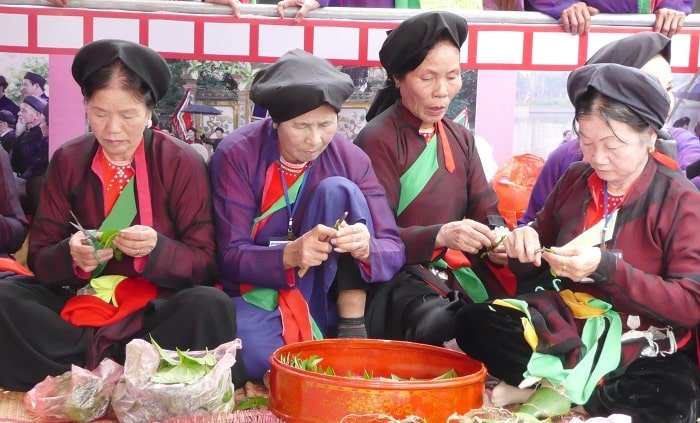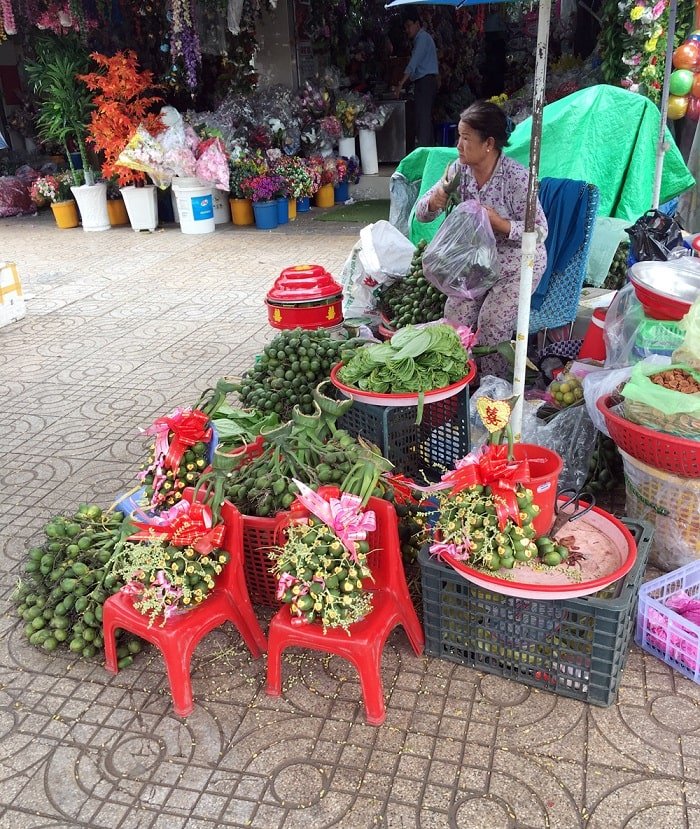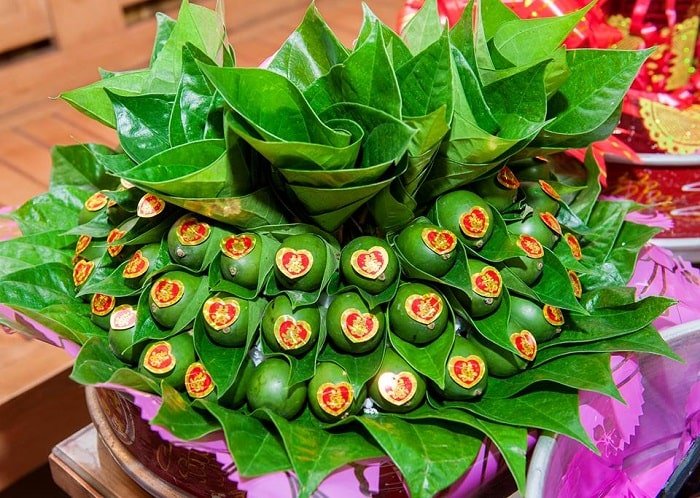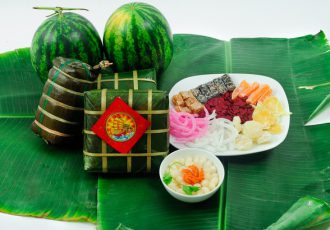The legend of the Betel quid: Once upon a time, Tan and Lang were two brothers, from a family of a dignitary who had received the title of Cao (superior) from King Hung, these two brothers looked like two drops of water although they were not twins. The only different point was the character. One was cheerful, the other serious. They were closely related to each other. Tan was the eldest, Lang the youngest.

Before his death, the father entrusted Tan to a respectable Taoist monk. Of course, Luu the monk agreed to take care of the child. The younger brother insisted on following the teaching that Luu gave to his brother. So both were accepted by the monk. He had a daughter, beautiful and about the same age as the brothers. She couldn’t recognize each other. One day she was able to distinguish them from each other, thanks to a ruse; she brought them soup, but she only served a bowl and a single pair of chopsticks, and then she went out to hide behind the door. When the two brothers were alone, the more serious left the soup to his older brother who was the most cheerful.

The years have passed. A growing friendship bound Tan, the eldest and daughter of the monk. Seeing this, the monk granted his daughter’s hand to Tan. The wedding took place and the young couple moved to a new house where the youngest came to join them. However, the relationship between the two brothers was no longer the same.
One evening, when the two brothers had been working in the fields all day, Lang was at home before Tan. No sooner had he crossed the threshold of the house than Tan’s wife rushed at him to kiss him. The youngest shouted in surprise which made the young woman understand his mistake. It was too late, however, that Tan had returned from the fields and found them confused. Relations between the two brothers have not improved. The youngest realized that Tan was jealous of him and decided to leave them.

He walked for a long time and arrived at the edge of a great river he did not know. With his head in his hands, he began to cry during the day and then at night. By sunrise, he had died and his body had become a large stone by the river.
Tan, remorseful, went to look for his brother. He walked for several days and arrived at a large river. Tired, he stopped and sat on a large stone. At dawn, at sunrise, he realized that the stone was his petrified brother. He got up and started crying. He cried all day and all night and then turned into a tree.
The next morning, his wife left and is looking for him. She finally arrived at the edge of a great river. Tired, she sat on a stone and leaned against a tree trunk and started crying until she ran out of strength. In place of the young woman, a climbing plant grew, embracing the trunk of the tree. Next to the stone block was now a tree surrounded by the climbing plant.
At this place, the monk Luu and his wife had a temple built called the “temple of fraternal understanding and fidelity between spouses”.
One fine day, King Hung was passing through the area. He stopped to admire the beauty and serenity of the landscapes, in front of the temple. He addressed his entourage and asked to be told the story of this monument… Since then, the cultivation of these climbing plants called betel has been spread by royal order, just as a decree of King Hung has now obliged young men to provide their families, and their guests, for their weddings, leaves of betel (climbing plant), areca nuts (fruit, of this extraordinary tree) and lime (like the big stone). The three, symbols of the beautiful love between Tan and the monk’s daughter and the fraternal understanding between Lang and his older brother, must be chewed together and promote conversation between friends, in memory of the beautiful love between Tan and the daughter of the monk Luu and the understanding between Lang and his older brother.



